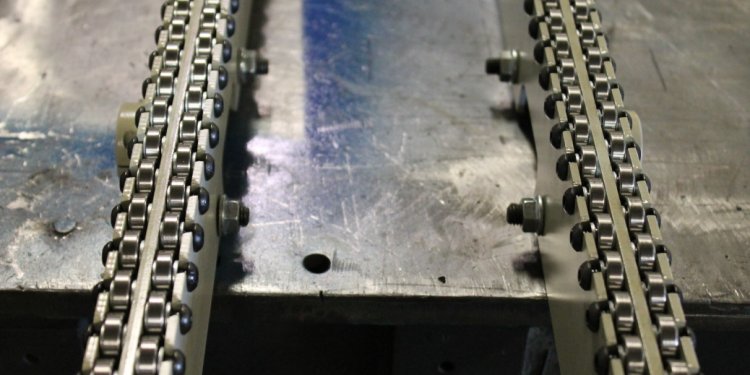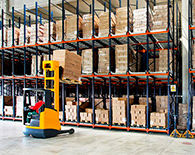June 1, 2020

Heavy Material Handling
Materials Handling: Heavy Lifting
Lifting heavy items is one of the leading causes of injury in the workplace. In 2001, the Bureau of Labor Statistics reported that over 36 percent of injuries involving missed workdays were the result of shoulder and back injuries. Overexertion and cumulative trauma were the biggest factors in these injuries.
Weight of Objects Potential Hazards:
Possible Solutions:
Figure 1.
A spool holding 117 pounds of wire.
Figure 5.
Employee twisting in
an awkward position. Possible Solutions:
Figure 6.
Different approaches
to lifting.
Figure 7.
Aerial lift.
Figure 8.
Employee reaching
overhead. Possible Solutions:
Lifting heavy items is one of the leading causes of injury in the workplace. In 2001, the Bureau of Labor Statistics reported that over 36 percent of injuries involving missed workdays were the result of shoulder and back injuries. Overexertion and cumulative trauma were the biggest factors in these injuries.
When employees use smart lifting practices and work in their "power zone, " they are less likely to suffer from back sprains, muscle pulls, wrist injuries, elbow injuries, spinal injuries, and other injuries caused by lifting heavy objects.
Weight of Objects Potential Hazards:
- Some loads, such as large spools of wire (Figure 1), bundles of conduit, or heavy tools and machinery place great stress on muscles, discs, and vertebrae.
- Lifting loads heavier than about 50 pounds will increase the risk of injury.
Possible Solutions:
- Use mechanical means such as forklifts (Figure 2) or duct lifts to lift heavy spools, transformers, switch gear, service sections, conduit, and machinery.
- Use pallet jacks and hand trucks to transport heavy items.
- Avoid rolling spools. Once they are in motion, it is difficult to stop them.
- Use suction devices (Figure 3) to lift junction boxes and other materials with smooth, flat surfaces. These tools place a temporary handle that makes lifting easier.
- Use ramps or lift gates to load machinery into trucks rather than lifting it.
- Materials that must be manually lifted should be placed at "power zone" height, about mid-thigh to mid-chest. Special care should be taken to ensure proper lifting principles are used. Maintain neutral and straight spine alignment whenever possible. Usually, bending at the knees, not the waist, helps maintain proper spine alignment.
- Place materials that are to be manually lifted at "power zone" height, about mid-thigh to mid-chest. Maintain neutral and straight spine alignment whenever possible. Usually, bending at the knees, not the waist, helps maintain proper spine alignment.
- Order supplies in smaller quantities and break down loads off-site. When possible, request that vendors and suppliers break down loads prior to delivery.
Figure 1.
A spool holding 117 pounds of wire.
 Figure 2.
Figure 2.
Forklift.
Figure 3.
Suction tool.
Figure 4.
Two-man lift.
- Limit weight you lift to no more than 50 pounds. When lifting loads heavier than 50 pounds, use two or more people to lift the load (Figure 4).
- Work with suppliers to make smaller, lighter containers.
- Bending while lifting (Figure 5) forces the back to support the weight of the upper body in addition to the weight you are lifting. Bending while lifting places strain on the back even when lifting something as light as a screwdriver.
- Bending moves the load away from the body and allows leverage to significantly increase the effective load on the back. This increases the stress on the lower spine and fatigues the muscles.
- Reaching moves the load away from the back, increases the effective load, and places considerable strain on the shoulders.
- Carrying loads on one shoulder, under an arm, or in one hand, creates uneven pressure on the spine.
- Poor housekeeping limits proper access to objects being lifted, and forces awkward postures.
Figure 5.
Employee twisting in
an awkward position. Possible Solutions:
- Move items close to your body and use your legs when lifting an item from a low location (Figure 6).
- Minimize bending and reaching by placing heavy objects on shelves, tables, or racks. For example, stack spools on pallets to raise them into the power zone.
- Avoid twisting, especially when bending forward while lifting. Turn by moving the feet rather than twisting the torso.
- Keep your elbows close to your body and keep the load as close to your body as possible.
- Keep the vertical distance of lifts between mid-thigh and shoulder height. Do not start a lift below mid-thigh height nor end the lift above shoulder height. Lifting from below waist height puts stress on legs, knees, and back. Lifting above shoulder height puts stress on the upper back, shoulders, and arms.
Figure 6.
Different approaches
to lifting.
Figure 7.
Aerial lift.
- Use ladders or aerial lifts (Figure 7) to elevate employees and move them closer to the work area so overhead reaching is minimized.
- Break down loads into smaller units and carry one in each hand to equalize loads. Use buckets with handles, or similar devices, to carry loose items.
- Keep the load close to the body. When lifting large, bulky loads, it may be better to bend at the waist instead of at the knees in order to keep the load closer to your body.
- Optimize employee access to heavy items through good housekeeping and preplanning.
- Use roll-out decks installed in truck beds to bring materials closer to the employee and eliminate the need to crawl into the back of a truck. See the Vehicular Activities section for more information.
- Holding items for a long period of time, such as when installing fixtures or j-boxes (Figure 8), even if loads are light, increases risk of back and shoulder injury, since muscles can be starved of nutrients and waste products can build up.
- Repeatedly exerting, such as when pulling wire, can fatigue muscles by limiting recuperation times. Inadequate rest periods do not allow the body to rest.
Figure 8.
Employee reaching
overhead. Possible Solutions:
See also:
- Buy Hand Held Printers Online
- Please visit site https://www.onajeallangumbs.com/.
- Apostille documents. Global Apostille take care of obtaining. Georgia apostille. Globalapostille.us
















